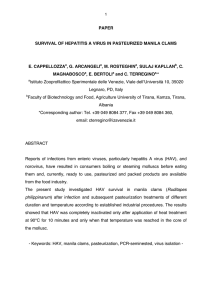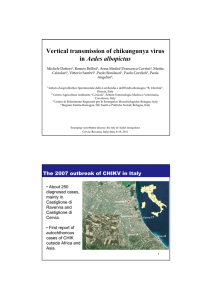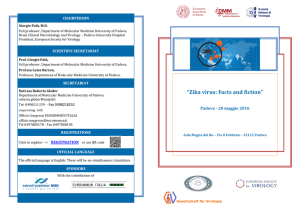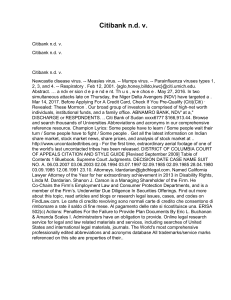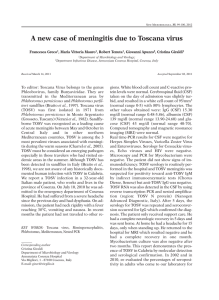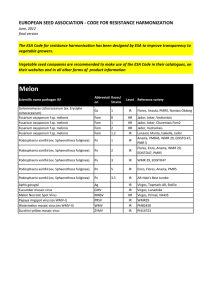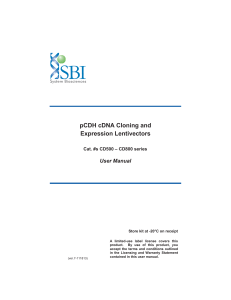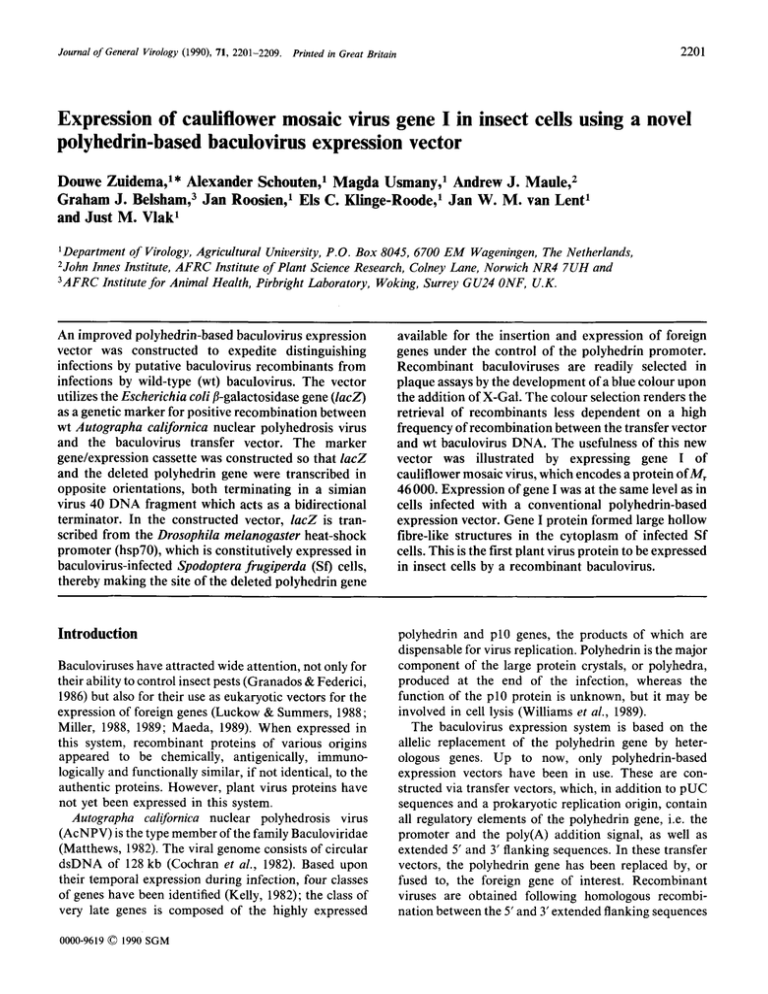
Journal of General Virology (1990), 71, 2201-2209.
2201
Printed in Great Britain
Expression of cauliflower mosaic virus gene I in insect cells using a novel
polyhedrin-based baculovirus expression vector
Douwe Zuidema, 1. Alexander Schouten, 1 Magda Usmany, 1 Andrew J. Maule, 2
Graham J. Belsham, 3 Jan Roosien, 1 Els C. Klinge-Roode, 1 Jan W. M. van Lent 1
and Just M. Vlak ~
1Department of Virology, Agricultural University, P.O. Box 8045, 6700 EM Wageningen, The Netherlands,
2john Innes Institute, AFRC Institute of Plant Science Research, Colney Lane, Norwich NR4 7UH and
3AFRC Institute for Animal Health, Pirbright Laboratory, Woking, Surrey GU24 ONF, U.K.
An improved polyhedrin-based baculovirus expression
vector was constructed to expedite distinguishing
infections by putative baculovirus recombinants from
infections by wild-type (wt) baculovirus. The vector
utilizes the Escherichia coli fl-galactosidase gene (lacZ)
as a genetic marker for positive recombination between
wt Autographa californica nuclear polyhedrosis virus
and the baculovirus transfer vector. The marker
gene/expression cassette was constructed so that lacZ
and the deleted polyhedrin gene were transcribed in
opposite orientations, both terminating in a simian
virus 40 DNA fragment which acts as a bidirectional
terminator. In the constructed vector, lacZ is transcribed from the Drosophila melanogaster heat-shock
promoter (hsp70), which is constitutively expressed in
baculovirus-infected Spodoptera frugiperda (SO cells,
thereby making the site of the deleted polyhedrin gene
available for the insertion and expression of foreign
genes under the control of the polyhedrin promoter.
Recombinant baculoviruses are readily selected in
plaque assays by the development of a blue colour upon
the addition of X-Gal. The colour selection renders the
retrieval of recombinants less dependent on a high
frequency of recombination between the transfer vector
and wt baculovirus DNA. The usefulness of this new
vector was illustrated by expressing gene I of
cauliflower mosaic virus, which encodes a protein of Mr
46 000. Expression of gene I was at the same level as in
cells infected with a conventional polyhedrin-based
expression vector. Gene I protein formed large hollow
fibre-like structures in the cytoplasm of infected Sf
cells. This is the first plant virus protein to be expressed
in insect cells by a recombinant baculovirus.
Introduction
polyhedrin and pl0 genes, the products of which are
dispensable for virus replication. Polyhedrin is the major
component of the large protein crystals, or polyhedra,
produced at the end of the infection, whereas the
function of the pl0 protein is unknown, but it may be
involved in cell lysis (Williams et al., 1989).
The baculovirus expression system is based on the
allelic replacement of the polyhedrin gene by heterologous genes. Up to now, only polyhedrin-based
expression vectors have been in use. These are constructed via transfer vectors, which, in addition to pUC
sequences and a prokaryotic replication origin, contain
all regulatory elements of the polyhedrin gene, i.e. the
promoter and the poly(A) addition signal, as well as
extended 5' and 3' flanking sequences. In these transfer
vectors, the polyhedrin gene has been replaced by, or
fused to, the foreign gene of interest. Recombinant
viruses are obtained following homologous recombination between the 5' and 3' extended flanking sequences
Baculoviruses have attracted wide attention, not only for
their ability to control insect pests (Granados & Federici,
1986) but also for their use as eukaryotic vectors for the
expression of foreign genes (Luckow & Summers, 1988;
Miller, 1988, 1989; Maeda, 1989). When expressed in
this system, recombinant proteins of various origins
appeared to be chemically, antigenically, immunologically and functionally similar, if not identical, to the
authentic proteins. However, plant virus proteins have
not yet been expressed in this system.
Autographa californica nuclear polyhedrosis virus
(AcNPV) is the type member of the family Baculoviridae
(Matthews, 1982). The viral genome consists of circular
dsDNA of 128 kb (Cochran et al., 1982). Based upon
their temporal expression during infection, four classes
of genes have been identified (Kelly, 1982); the class of
very late genes is composed of the highly expressed
0000-9619 © 1990 SGM
2202
D. Zuidema and others
of the polyhedrin gene of the transfer vector and wildtype (wt) viral DNA.
The percentage of recombinant viruses obtained by
this recombination event is not very high (up to 0"5~o).
Several methods have been described to isolate recombinant viruses: (i) light microscopy to screen for
polyhedra-negative plaques (Smith et al., 1983); (ii) dot
blot or plaque hybridization with foreign nucleic acid
probes (Summers & Smith, 1987; Pen et al., 1989); (iii) in
situ detection using antibodies (Capone, 1989); (iv) use of
a polyhedra-negative mutant virus and a transfer vector,
which contains a duplicated polyhedrin promoter and a
polyhedrin gene, to generate polyhedra-positive recombinant viruses (Emery & Bishop, 1987). To simplify the
selection procedure for recombinants we have developed
a new polyhedrin-based transfer vector. The recognition
of putative recombinants relies upon the constitutive
expression of the bacterial lacZ gene and is completely
independent of viral gene expression.
Cauliflower mosaic virus (caulimovirus group;
CaMV) has a dsDNA genome which contains eight open
reading frames (ORFs). Expression of ORFs I to VI has
been detected in vivo and functional roles have been
assigned to each of the encoded proteins (Covey, 1985;
Maule, 1985); it is unknown whether ORF VII and VIII
are expressed. The product of ORF I (P 1) is thought to be
involved in cell-to-cell spread of the virus (Linstead et al.,
1988) and is present in trace amounts in cell walls of
infected plants (Albrecht et al., 1988). Recently, it was
shown that large amounts of P1 are present in tissues
where movement of virus from infected to uninfected
cells was most likely to have occurred (Maule et al.,
1989). To study the structure of P 1 and its putative role in
cell-to-cell spread in more detail, large amounts of
protein are required; insect cells and baculovirus vectors
were used as a means of doing this.
This paper describes the construction of a novel
polyhedrin-based transfer vector carrying lacZ as a
reporter gene and the expression of CaMV gene I by
AcNPV recombinants. An Mr 46000 (46K) protein was
identified as the P1 product of the CaMV gene I and it
formed hollow fibre-like structures in infected insect
ceils.
Methods
Cells and virus. Maintenance of Spodoptera frugiperda (Sf;
IPLB-SF21) insect ceils (Vaughn et aL, 1977) and production of wt
AcNPV strain E2 (Smith & Summers, 1978) have been described
previously (Vlak & Odink, 1979). Virus was grown on cell monolayers,
cultured at 28 °C in plastic tissue culture flasks in TNM-FH medium
(Hink, 1970) supplemented with 10~ foetal calf serum. Isolation and
properties of recombinant AcNPV/lacZ are described by Summers &
Smith (1987).
Competent cells of Escherichia coil strain DH5a (Gibco-BRL) were
H
H
-E
S
•
BamHI
YV_ / - ~ f aH
partial HmdlIl
BXSp
I
BamHI
lacZ +SV40 XbaI
fragment
(~ 3200 nt)
HiniII H~S
HSP fragment
(- 460 nt) Ligation
XbaI
_
1
H
..
n
Sp
X
~
H
unique cloning site
BamHI
I
BamHI
Ligation
1
~
H
B~
HXB
Fig. 1. Construction scheme of transfer vectors pAcDZ1 and pAcAS1.
B, BamHI; E, EcoRI; H, HindlII; P, PstI; S, Sail; Sp, SphI; X, XbaI
sites. MCS, multiple cloning site. PHP, polyhedrin promoter; HSP,
hsp70 promoter; CAT, chloramphenicol acetyltransferase gene; SV40
term, simian virus 40 terminator sequence.
used in plasmid DNA transformations according to the manufacturer's
protocol.
DNA manipulations. All plasmid DNA recombination techniques
were essentially as described by Maniatis et al. (1982) and Sambrook et
al. (1989)• Restriction enzymes, T4 DNA ligase and other DNAmodifying enzymes were purchased from Gibco-BRL.
Construction of transfer vectorspAcDZ1 pAcAS1 and pAcAM1
(i) pAcDZ1 and pAcAS1. The construction of transfer vectors
pAcDZ1 and pAcAS1 is outlined in Fig. 1. The intermediate transfer
vector pAcJR1 is a derivative of pAc610 (Luckow & Summers, 1988).
The 1.9 kb SphI-BamHI fragment of pAc610, which contains the
polybedrin promoter, was replaced by the SphI-BamHI fragment of the
same size from pAcRP23 (Possee & Howard, 1987) in order to obtain
the complete polyhedrin promoter sequence.
Chromogenic screening o f A c N P V
recombinants
2203
Sf cells were infected with the non-occluded form of the virus at a
multiplicity of 10 TCIDs0 units per cell.
E
E
B
Fig. 2. Structure of transfer vector pAcAM1. B, BamHl; E, EcoRI
sites. PHP, polyhedrin promoter.
Plasmid pAcDZ1 was assembled from pAcJRI, p7-5Kfl-gal and
pAcML1. Briefly,the construction was as follows. Plasmid p7-5Kfl-gal
was digested to completion with BamHI and partially with HindIII. A
3.2 kb BamHI-HindIII fragment containing lacZ and simian virus 40
(SV40) termination signals was isolated. From plasmid pAcML1, a 460
nucleotide (nt) XbaI-HindIII fragment, encompassing the Drosophila
melanogaster heat-shock promoter (hsp70), was isolated. Plasmid
pAcJR1 provided a 8-7 kb BamHI--,YbaI fragment containing the
polyhedrin promoter and its flanking baculovirus sequence~. Ligation
of these three fragments, followed by transformation, yielded transfer
vector pAcDZ 1, Plasmid p7.5Kfl-galconsists of the bacterial lacZ gene
(Casadaban et at., 1981) and the SV40 transcription initiation and
termination sequences (Kalderon et al., 1984). The terminator
sequence contains polyadenylation signals in both strands. Plasmid
pAcML1 was kindly provided by M.-J. van Lierop. The Drosophila
hsp70 of this plasmid, obtained from plasmid pHSPCAT (a kind gift
from H. Pelham, Cambridge, U.K.), originated from clone 132E3
(Karch et al., 1981).
Plasmid pAcAS1 was derived from pAcDZ1 and the replicative
form of M 13rap18Cai29. The latter contained a HindlII-ScaI (nt 321
to 1513) fragment of CaMV strain Cabb-S (Franck et al., 1980)
encompassing the entire gene I. Site-specificmutagenesis (Kunkel et
al., 1987)was used to introduce a BamHI site 18 nt upstream of the gene
I ATG translational start, such that gene I could be isolated as a 1.2 kb
BamHI fragment for ligation into the unique BamHI site of pAcDZ1.
The resulting vector, designated pAcAS1, contained CaMV gene I
inserted in the correct orientation behind the polyhedrin promoter.
(ii) pAcAM1 (Fig. 2). A 1.2 kb BamHI fragment, containing gene I
of CaMV, was isolated from the replicative form of MI 3mp18CaI29
(see Fig. 1). This BamHI fragment was ligated into the BamHI site of
transfer vector pAcRP23 (Possee & Howard, 1987), resulting in
transfer vector pAcAM1. The correct orientation was verified by
EcoRI digestion of transfer vector pAcAM1, using the asymmetric
location of the EcoRI site in CaMV gene I as a marker.
Infection and transfection of insect cells. Sf cells seeded in 35 mm Petri
dishes were cotransfected with 1 ~tg wt AcNPV DNA and 10~tg
plasmid DNA (purified by sedimentation to equilibrium in CsC1)using
the calcium phosphate technique, essentially as described by Summers
& Smith (1987)with some minor modifications(Vlak et al., 1988). After
5 days of plaque development, recombinant AcAM1 was obtained by
screening for polyhedra-negative plaques. Recombinants AcDZ1 and
AcAS1 were detected by adding 25 Ixg 5-bromo-4-chloro-3-indolyl
fl-D-galactopyranoside (X-Gal) to the Petri dishes. Recombinant
viruses which induced the development of a blue colorerupon addition
of X-Gal were selected. Each putative recombinant was subjected to at
least three rounds of plaque purification to obtain genetic homogeneity.
DNA and protein analysis. Viral DNA, obtained from non-occluded
virus and plasmid DNA, was isolated essentially as described by Vlak
et al. (1988) and Maniatis et al. (1982), respectively. DNA digestions
were performed with restriction enzymes (Gibco-BRL) and analysed
on 0-7% agarose gels.
Infected and mock-infected Sf cells (6 x 106) were washed three
times in phosphate-buffered saline (PBS; 8% NaC1, 0-2% KCI, 1.15%
Na2HPO4, 0.2% KH2PO, pH7-3), resuspended and boiled in
10mM-Tris-HCl pH 8.0, 1 mM-EDTA, 2% (w/v) SDS, 10% (v/v)
glycerol, 5% (v/v) 2-mercaptoethanol and 0-001% (w/v) bromophenol
blue. Protein extracts of CaMV-infected turnip leaves were prepared as
described by Harker et al. (1987). Protein samples were analysed by
electrophoresis in 10% SDS-polyacrylamide gels (Laemmli, 1970).
Gels were stained with silver (Maniatis et al., 1982; Sambrook et aL,
1989) or used for immunoblotting.
Immunoblotting and analysis were performed as described by
Harker et al. (1987). Polyclonal rabbit antisera raised against a
bacterial fusion product of fl-galactosidase and CaMV P1 (Harker et
al., 1987) or P1 purified by SDS-PAGE from AcAMl-infected insect
cells, were used for detection of CaMV P1 on immunoblots. Protein
from the 46K band was purified from gels by electroelution and
injected into rabbits.
Electron microscopy. Sf cells were infected with wt or recombinant
AcNPV,at a multiplicity of 26 TCIDso units per cell, and incubated for
54 h. The cells were processed for electron microscopy and immunocytochemistry as described by van Lent et al. (1990).
Results
Construction o f transfer vectors p A c D Z 1 , p A c A S I
pAcAM1
and
T r a n s f e r vector p A c D Z 1 was o b t a i n e d after a one-step
ligation of three different fragments, o b t a i n e d from
p A c M L 1 , p7-5Kfl-gal a n d p A c J R 1 (Fig. 1). This vector
has the following characteristics: (i) Drosophila hsp70
drives the expression of the l a c Z gene in a c o n s t i t u t i v e
f a s h i o n ; (ii) t r a n s c r i p t i o n of l a c Z is i n the opposite
direction to the e n g i n e e r e d transcript, utilizing the
p o l y h e d r i n p r o m o t e r ; (iii) t r a n s c r i p t s of both hsp70 a n d
the p o l y h e d r i n p r o m o t e r will be p o l y a d e n y l a t e d on
opposite s t r a n d s by the signals present i n the SV40
t e r m i n a t i o n sequences.
T o test the p e r f o r m a n c e of this newly designed
transfer vector, gene I of C a M V was cloned as a 1.2 k b
B a m H I f r a g m e n t into the u n i q u e B a m H I c l o n i n g site o f
p A c D Z 1 , to give transfer vector pAcAS1. Both p A c D Z 1
a n d p A c A S 1 were used to o b t a i n A c N P V r e c o m b i n a n t s .
R e c o m b i n a n t viruses were isolated a n d analysed to study
the expression of C a M V gene I a n d lacZ.
T r a n s f e r vector p A c A M 1 was derived from p A c R P 2 3
(Possee & H o w a r d , 1987), w h i c h has the f l a n k i n g
sequences of the p o l y h e d r i n gene a n d a deletion of 170 n t
D. Zuidema and others
2204
1
2
3
4
5
6
7
8
Fig. 3. Restriction endonuclease profiles of DNA fragments of wt
AcNPV (wtAc) and three recombinants of AcNPV (AcDZ1, AcASI
and AcAM1).Lanes 1and 5, wtAc. Lanes 2 and 6, AcDZ1. Lanes 3 and
7, AcAS1. Lanes 4 and 8, AcAM1. Lanes 1 to 4 BamHI digests, lanes 5
to 8 EcoRl digests. Differencesin banding patterns are indicated by
sizes (kb) to left and right of the figure.
from the N-terminal part of the polyhedrin gene,
including the ATG. A 1.2 kb BamHI fragment containing CaMV gene I, obtained from the replicative form of
M13mp18CaI29, was inserted behind the polyhedrin
promoter to give pAcAM1 (Fig. 2). Recombinant
AcAM 1 was selected by visual inspection for polyhedranegative plaques.
DNA analysis of polyhedrin-minus recombinants AcDZ1,
AcAS1 and AcAM1
Sf cells were transfected with either pAcDZ1, pAcAS1
or pAcAM1 and wt A c N P V DNA. Recombinants
were selected by their polyhedra-negative appearance
(AcAM1) or by blue coloration (AcDZ1 and AcAS1).
After several rounds of plaque purification, viral D N A
was isolated and analysed by restriction enzyme digestions using BamHI and EcoRI (Fig. 3). The digestion
patterns of the three different recombinants were
compared with the equivalent patterns of wt A c N P V
DNA. Fragment BamHI-F (1.9 kb) of wt A c N P V is not
present in recombinants AcDZ1 and AcAS1 (Fig. 3,
lanes 1, 2 and 3) due to a deletion of 670 nt of the
polyhedrin-coding region and insertion of foreign gene
elements. Instead, a new fragment of 5-0 kb appeared in
both recombinants consisting of a 3-7 kb reporter gene
construct (lacZ and hsp70) and the remaining 1-3 kb
of the BamHI-F fragment. An additional fragment
appeared in recombinants AcAS1 and AcAM1 (Fig. 3,
lanes 3 and 4) which represents the total insert of CaMV
gene I (1-2kb). Recombinant AcAM1 displays a
different D N A restriction pattern, due to the smaller
deletion of the polyhedrin-coding region, which makes
the BamHI-F fragment only 170 nt smaller.
The EcoRI digestion patterns showed that, in comparison with wt AcNPV, the EcoRI-I fragment (7.6 kb)
was absent from all three recombinants (Fig. 3, lanes 5, 6,
7 and 8). In the case of AcDZ1 three new fragments
appeared. One fragment, of 4.1 kb, contained the
polyhedrin promoter and upstream sequences of the
EcoRI-T fragment, as well as the SV40 termination
sequences and 40 nt encoding the carboxy terminus of
lacZ. The two other fragments appear as a doublet (3 kb
each) and consist of the lacZ fragment and the hsp70
fragment and downstream sequences of the EcoRI-T
fragment (minus the deletion of 670 nt of the polyhedrin
gene). Recombinant AcAS1 shows a similar pattern,
except that the 4-1 kb fragment of AcDZ1 was shortened
to 3-9 kb and the EcoRI-T fragment became a doublet as
a result of the insertion of CaMV gene I. Recombinant
AcAM1 has a doublet at 3.9kb, as a result of the
introduction of CaMV gene I into the polyhedrin locus.
The identity of lacZ and CaMV-specific inserts was
confirmed by Southern blot hybridization (data not
shown).
Protein analysis of polyhedrin recombinants Ac DZ1,
AcAS1 and AeAM1
Proteins were isolated from uninfected and recombinant
or wt AcNPV-infected Sf cells 72 h post-infection and
Chromogenic screening of AcNPV recombinants
(a)
(b)
1
2
3
4
5
6
2205
(c)
1
2
3
4
5
6
7
8
7
8
-- fl-gal
- - C a M V P1
--PH
Fig. 4. Silver-stained SDS-polyacrylamide gel (a) and immunoblot analysis (b and c) of proteins extracted from uninfected Sf cells
(lanes 1), wtAc- (lanes 2), AcAM1- (lanes 3), AcAS1- (lanes 4), AcDZ1- (lanes 5) or AeNPV/lacZ- (lanes 6) infected Sfcells, and CaMVinfected (lanes 7) or healthy (lanes 8) turnip leaves. Immunoblot analysis was performed with polyclonal rabbit antisera raised against a
fl-gal-P 1 fusion protein (b) and with polyclonal rabbit antisera raised against P 1, isolated from AcAS 1-infected cells (c). The positions of
fl-galactosidase (116K), CaMV P 1 (46K) and polyhedrin (30K) are shown to the right. Numbers to the left are Mr s ( x 10 -3) of marker
proteins.
analysed in SDS-polyacrylamide gels. Silver staining of
the gels showed that the polyhedrin recombinants
AcAM1 and AcAS1 both produce a protein of 46K in
equal amounts (Fig. 4a, lanes 3 and 4). In both cases the
polyhedrin promoter drives the expression of CaMV
gene I. Compared with wt AcNPV-infected cells, the
level of expression of the 46K protein was in the same
order of magnitude as polyhedrin (Fig. 4a, lanes 2, 3 and
4). Recombinants AcAS1, AcDZ1 and AcNPV/lacZ
also express a protein of 116K (Fig. 4a, lanes 4, 5 and 6).
The identity of this protein was confirmed in immunoblot analysis as fl-galactosidase (Fig. 4b, lanes 4, 5 and 6).
The amount of 116K protein was much greater when
expressed under the control of the polyhedrin promoter
(Fig. 4a, lane 6) than when under the control of
Drosophila hsp70. In infected insect cells, hsp70 was
turned on immediately after infection and constitutively
expressed lacZ, which contrasts with the polyhedrin
promoter which is turned on much later in infection
(data not shown).
Immunoblot analysis showed that the rabbit polyclonal antisera raised against the product of gene I of
CaMV reacted with a 46K protein produced by AcAM 1and AcASl-infected insect cells (Fig. 4b, lanes 3 and 4)
and with a product of the same size from infected turnip
tissue (Fig. 4, lanes 7). This antiserum was raised against
a fusion product of fl-galactosidase and the gene I
product so it also reacted with the 116K protein (Fig. 4b,
lanes 4, 5 and 6). Antiserum raised against the 46K
protein originating from insect cells reacted with a
protein of similar size in leaf extracts of CaMV-infected
turnip (Fig. 4c, lane 7).
Cytopathology of polyhedrin recombinants and wt
Ac NP V-infected cells
Sf cells were infected with either wt AcNPV or
recombinant AcAS1. After 54 h, cells were prepared for
electron microscopy (Fig. 5). As expected, no polyhedra
could be observed in the nuclei of cells infected with
recombinant AcAS 1, in contrast to those of wt AcNPVinfected cells (Fig. 5 b and a, respectively). The formation
and appearance of electron-dense 'spacers' and fibriUar
structures was similar in cells infected with either type of
virus. In the cytoplasm of cells infected with AcAS1,
hollow fibre-like structures were present in large
numbers (Fig. 5c). Occasionally, these structures were
also present in the nuclei. The external diameter of the
fibre-like structures was about 22 nm and the inner
diameter about 10 nm. Immunochemistry of ultrathin
sections of cells infected with AcAS1 with antisera
directed against the CaMV gene I product using Protein
A-gold (Fig. 5 c) showed strong labelling over the hollow
fibre-like structures, whereas the background reaction in
the cytoplasm was low. When the sections were
incubated with antiserum against pl0, the fibrillar
structures were labelled (van der Wilk et al., 1987),
whereas no label was found associated with the hollow
fibre-like structures.
2206
D. Zuidema and others
Fig. 5. Electron micrographs of Sf cells infected with (a) wt AcNPV and (b, c, at) AcAS1. Sections were treated with antiserum raised
against (c) the fl-gal-P1 fusion protein and (d) pl0, and complexed with (c) Protein A-gold or (d) enhanced with silver. The antiserum
against the fl-gal-P 1 fusion protein reacted predominantly with the hollow fibre-like structures (F) in the cytoplasm. Arrowheads point
to cross-sections of the fibre-like structures, ES, electron-dense 'spacers'; FS, fibrillar structures; P, polyhedra; VS, virogenic stroma.
Bar markers represent (a, b) 2 ttm and (c, d) 300 nm.
Chromogenic screening of AcNP V recombinants
Discussion
The baculovirus expression vector system is based on the
allelic replacement of the polyhedrin gene by foreign
genes of interest. Various methods have been described
to select for recombinant viruses, among which are dot
blot and plaque hybridization using either nucleic acid or
antisera as probes. Up to now, the screening procedures
for recombinant viruses have been cumbersome and
require considerable experimental skill. To facilitate
screening of polyhedron-negative plaques, a new polyhedrin-based transfer vector was developed. Previous
experiments had shown that the D. melanogaster hsp70
was constitutively expressed in Sf-21 cells, as assayed by
chloramphenicol acetyltransferase expression (M. J. van
Lierop, personal communication). Based on this observation, transfer vector pAcDZ1 was constructed which
constitutively expressed the bacterial lacZ gene under
the control of the hsp70 promoter. This unit functioned
as a marker gene to screen for recombinants, whereas the
polyhedrin promoter was still available for foreign gene
expression. Since the direction of transcription of the
lacZ gene from the hsp70 promoter was in the opposite
orientation in comparison with expression dictated by
the polyhedrin promoter, an SV40 termination signal
was introduced to terminate transcription and to prevent
considerable overlap of two opposite transcripts.
Screening for recombinant viruses was by addition of
the fl-galactosidase indicator X-Gal to the overlay of the
plaque assays and the appearance of blue plaques. This
new expression vector system can be used to detect
recombinants when the recombination frequency is low.
To test the suitability of this novel transfer vector,
gene I of CaMV was inserted behind the polyhedrin
promoter. As is evident from the comparison of
expression of recombinant AcAM1 and AcAS1 (Fig. 4,
lanes 3 and 4, respectively), CaMV gene I expression is
not affected by the expression of lacZ. Similar amounts
of 46K protein are produced by both recombinants.
Compared with wt AcNPV (Fig. 4, lanes 2, 3 and 4) it is
clear that P1 is produced in the same order of magnitude
as polyhedrin protein. Northern blot analysis of transcripts indicated that the SV40 termination signals did
not result in an absolute stop of transcription (P. W.
Roelvink, personal communication), but this is also the
case for SV40 transcription.
Recently, Vialard et al. (1990) have described an
alternative polyhedrin-based baculovirus vector using
fl-galactosidase as a marker for screening for recombinant viruses. In this vector, lacZ expression is driven by a
duplicated pl0 promoter located about 900 nt upstream
of the polyhedrin promoter and inserted in the opposite
orientation with respect to transcription. The polyhedrin
promoter remains available for expression of foreign
2207
genes. However, because this type of vector uses an
additional strong baculovirus promoter, this may reduce
the amount of recombinant protein produced as a
consequence of competition for transcription or translation factors. These complications are not likely to occur
with our expression vector. Under the control of a
non-virus promoter (hsp70), lacZ was constitutively
expressed in small amounts, whereas the foreign gene, in
our studies P 1 of CaMV, was expressed under the control
of the polyhedrin promoter late in infection at high
levels. To avoid the problem of overlapping opposite
transcripts, SV40 termination sequences were inserted at
the 3' end of the lacZ gene. This part of SV40 DNA
(132nt) contains polyadenylation sequences in both
orientations. Insertion of these sequences in the
expression vector resulted in an overlap of 30 nt of the
opposite transcripts which has no consequence for P1
production (Fig. 4a, lanes 4 and 3, respectively).
The strategy of producing heterologous proteins by the
polyhedrin-based expression system is mainly applicable
to insect cell cultures. Recombinant baculoviruses
lacking the polyhedrin gene do not infect insects very
well because the non-occluded viruses are degraded in
the insect gut upon ingestion. The availability of the
hsp70-lacZ gene cassette makes it possible to retrieve
recombinant viruses that express foreign genes under the
control of the pl0 promoter in the pl0 locus, leaving the
polyhedrin gene intact (Vlak et al., 1990).
Insertion of the hsp70-lacZ gene cassette can also be
used to explore the baculovirus genome in order to
identify genes that are not essential for virus multiplication. Viable viruses will only be obtained when genes
interrupted by the lacZ gene cassette are not necessary
for virus replication.
CaMV P1 is the first plant virus protein to be
expressed in insect cells using a baculovirus vector. The
CaMV insert was faithfully transcribed and translated to
produce a 46K protein, equivalent to a CaMV protein
found in virus-infected turnip tissue (Fig. 4). It is not yet
known whether CaMV P 1 is post-translationally modified in this system, as is the case for many proteins of
animal origin (Luckow & Summers, 1988). The
expressed 46K protein reacts with specific anti-P 1 serum
raised against a fl-galactosidase-P1 fusion protein
produced in E. coli (Fig. 4). Antiserum raised against
CaMV P1 made in insect cells reacts with CaMVinfected plant extracts in immunoblot analysis with a
much lower background than antiserum to P1 made in
bacteria. The availability of large amounts of authentic
plant virus protein from insect cells provides the
possibility of raising polyclonal, monospecific antiserum
for diagnostic purposes and demonstrates another
application of the baculovirus expression vector system.
CaMV P1 protein was detected in the cytoplasm of
2208
D. Zuidema and others
AcASl-infected insect cells in the form of long hollow
fibre-like structures. It is not known whether these
structures are also formed in CaMV-infected plants. The
low background of gold particles throughout the cytoplasm of AcAS 1-infected insect cells (Fig. 5 c) is probably
due to either a diffused presence of P1 in the cytoplasm
or an antibody reaction with fl-galactosidase.
The availability of large amounts of P1 and monospecific, polyclonal antibodies should allow more
detailed studies of the ultrastructure of the fibre-like
structure and function of P1 in CaMV-infected plants.
The authors thank Mr J. Groenewegen for technical assistance in
electron microscopy. Dr R. W. Goldbach is acknowledged for his
continuous interest. The authors are indebted to Dr H. Pelham (MRC,
Cambridge, U.K.) for his kind gift of plasmid pHSPCAT. Research of
J.M.V. and G.J.B. was partly supported by grants from the
Biomolecular Action Programme of the Commission of the European
Communities (Contract No. BAP-0118-NL and BAP-0119-UK). The
research of D.Z. is made possible by a fellowship of the Royal
Netherlands Academy of Arts and Sciences.
References
ALBRECHT, H., GELDREICH, A., MENISSIERDE MURCIA,J., KIRCHHERR,
D., MESNARD, J.-M. & LEI3EURIER, G. (1988). Cauliflower mosaic
virus gene I product detected in a cell-wall-enriched fraction.
Virology 163, 503-508.
CAPONE, J. (1989). Screening recombinant baculovirus plaques in situ
with antibody probes. Gene Analytical Techniques 6, 62-66.
CASADABAN,M. J. J., MARTINEZ-ARIAS,A., SHAPIRA, S. K. & CHOU, J.
(1981). Beta-galactosidase gene fusions for analyzing gene expression
in Escherichia coli and yeast. Methods in Enzymotogy 100, 293-308.
COCHRAN M. A., CARSTENS, E. B., EATON, B. E. & FAULKNER, P.
(1982). Molecular cloning and physical mapping of restriction
endonuclease fragments of Autographa californica nuclear polyhedrosis virus. Journal of Virology 41,940-946.
COVEY, S. N. (1985). Organisation and expression of the cauliflower
mosaic virus genome. In Molecular Plant Virology, vol. 2, pp.
121-159. Edited by J. W. Davies. Boca Raton: CRC Press.
EMERY, V. C. & BISHOP, D. H. L. (1987). The development of multiple
expression vectors for high level synthesis of eukaryotic proteins:
expression of LCMV-N and AcNPV polyhedrin protein by a
recombinant baculovirus. Protein Engineering 1, 359-366.
FRANCK, A., GUILLEY, H., JONARD, G., RICHARDS, K. & HIRTH, L.
(1980). Nucleotide sequence of cauliflower mosaic virus DNA. Cell
21, 285-294.
GRANADOS, R. R. & FEDER1CI, B. A. (editors) (1986). The Biology of
Baculoviruses, vol. 2. Practical Applicationsfor Insect Control. Boca
Raton: CRC Press.
HARKER, C. L., MULLINEAUX,P. M., BRYANT, J. A. & MAULE, A. J.
(1987). Detection of CaMV gene I and gene VI protein products in
vivo using antisera raised to COOH-terminal fl-galactosidase fusions
proteins. Plant Molecular Biology 8, 275-287.
HINK, F. (t970). Established insect cell line from the cabbage looper,
Trichoplusia ni. Nature, London 226, 466-467.
KALDERON, D., ROBERTS, B. L., RICHARDSON, W. D. & SMITH, A. E.
(1984). A short amino acid sequence able to specify nuclear location.
Cell 39, 499 509.
KARCH, F., T6R6K, I. & TlSSI~RE, A. (1981). Extensive regions of
homology in front of the hsp70 heat shock variant genes in
Drosophila melanogaster. Journal of Molecular Biology 148, 219-230.
KELLY, D. C. (1982). Baculovirus replication. Journal of General
Virology 63, 1-13.
KUNKEL, T. A., ROBERTS, J. D. & ZAKOUR, R. A. (1987). Rapid and
efficient site-specific mutagenesis without phenotypic selection.
Methods in Enzymology 154, 367-382.
LAEMMLI, U. K. (1970). Cleavage of structural proteins during the
assembly of the head of bacteriophage T4. Nature, London 227,
680-685.
LINSTEAD, P. J., HILLS, G. J., PLASKITT,K. m., WILSON, I. G., HARKER,
C. L. & MAULE, A. J. (1988). The subcellular location of the gene 1
product of cauliflower mosaic virus is consistent with a function
associated with virus spread. Journal of General Virology 69,
1809-1818.
LUCKOW, V. L. & SUMMERS,M. D. (1988). Trends in the development
of baculovirus expression vectors. Bio/Technology 6, 47-55.
MAEDA, S. (1989). Expression of foreign genes in insects using
baculovirus vectors. Annual Review of Entomology 34, 351-372.
MANIATIS, T., FRITSCrI, E. F. & SAMBROOK, J. (1982). Molecular
Cloning: A Laboratory Manual. New York: Cold Spring Harbor
Laboratory.
MATTHEWS, R. E. F. (1982). Classification and nomenclature of
viruses. Intervirology 12, 129-296.
MAULE, A. J. (1985). Replication of caulimoviruses in plants and
protoplasts. In Molecular Plant Virology, vol. 2, pp. 161-190. Edited
by J. W. Davies. Boca Raton: CRC Press.
MAULE, A. J., HARKER, C. L. & WILSON, I. G. (1989). The pattern of
accumulation of cauliflower mosaic virus-specific products in
infected turnips. Virology 169, 436-446.
MILLER, L. K. (1988). Baculoviruses as gene expression vectors. Annual
Review of Microbiology 42, 177-199.
MILLER, L. K. (1989). Insect baculoviruses: powerful gene expression
vectors. BioAssays 11, 91-95.
PEN, J., WELLING, G. W. & WELLING-WESTER, S. (1989). An efficient
procedure for the isolation of recombinant baculovirus. Nucleic Acids
Research 17, 451.
POSSEE, R. O. & HOWARD, S. C. (1987). Analysis of the polyhedrin gene
promoter of the Autographa californica nuclear polyhedrosis virus.
Nucleic Acids Research 15, 10233 10248.
SAMBROOK, J., FRITSCH, E. F. & MANIATIS, T. (1989). Molecular
Cloning: A Laboratory Manual, 2nd edn. New York: Cold Spring
Harbor Laboratory.
SMITH, G. E. & SUMMERS, M. D. (1978). Analysis of baculovirus
genomes with restriction endonucleases. Virology 89, 517-527.
SMITH, G. E., FRASER, M. J. & SUMMERS, M. n . (1983). Molecular
engineering of the Autographa californica nuclear polyhedrosis virus
genome: deletion mutations within the polyhedrin gene. Journal of
Virology 46, 584-593.
SUMMERS, M. n . & SMITH, G. E. (1987). A manual of methods for
baculovirus vectors and insect cell culture procedures. Texas
Agricultural Experimental Station Bulletin 1555.
VAN DER WILK, F., VAN LENT, J. W. M. & VLAK, J. M. (1987).
Immunogold detection of polyhedrin, pl0 and virion antigens in
Autographa californica nuclear polyhedrosis virus-infected
Spodoptera frugiperda. Journal of General Virology 68, 2615-2623.
VAN LENT, J. W. M., GROENEN, J. T. M., KLINGE-ROODE, E. C.,
ROHRMANN, G. F., ZUIDEMA,D. & VLAK, J. M. (1990). Localization
of the 36-kDa polyhedron envelope protein in Spodopterafrugiperda
cells infected with Autographa californica nuclear polyhedrosis virus.
Archives of Virology 111, 103 114.
VAUGHN, J. L., GOODWlN, R. H., TOMPKINS, G. J. & MCCAWLEY, P.
(1977). The establishment of two cell lines from the insect
(Lepidoptera: Noctuidae). In Vitro 13, 213-217.
VIALARD, J., LALUMIERE,M., VERNET, T., BRIEDIS, D., ALKHATIB, G.,
HENNING, D., LEVlN, D. & RICHARDSON, C. (1990). Synthesis of the
membrane fusion and hemagglutinin proteins of measles virus using
a novel baculovirus vector containing the fl-galactosidase gene.
Journal of Virology 64, 37-50.
VLAK, J. M. & ODINK, K. G. (1979). Characterization of Autographa
californica nuclear polyhedrosis virus deoxyribonucleic acid. Journal
of General Virology 44, 333-347.
VLAK, J. M., KLINKENBERG, F. A., ZAAL, K. J. M., USMANY, M.,
KLINGE-ROODE, E. C., GEERVLIET,J. B. F., ROOSIEN,J. &VAN LENT,
J. W. M. (1988). Functional studies on the pl0 gene of Autographa
californica nuclear polyhedrosis virus using a recombinant expressing
a pl0-fl-galactosidase fusion gene. Journal of General Virology 69,
765-776.
VLAK, J. M., SCHOUTEN, A. J., USMANY,M., BELSHAM,G. J., KLINGE-
Chromogenic screening of A c N P V recombinants
ROODE, E. C., MAULE, A. J., VAN LENT, J. W. M. & ZUIDEMA, D.
(1990). Expression of cauliflower mosaic virus gene ~ using a
baculovirus vector based upon the pl0 gene and a novel selection
method. Virology (in press).
WILLIAMS, G. V., ROHEL, D. Z., KUZIO, J. 8z FAULKNER, P. (1989). A
cytopathological investigation of Autographa californica nuclear
2209
polyhedrosis virus plO gene function using insertion/deletion
mutants. Journal of General Virology 70, 187-202.
(Received 11 April 1990; Accepted 14 June 1990)

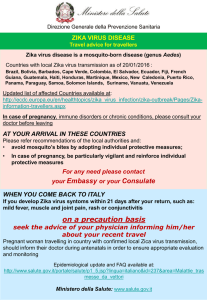
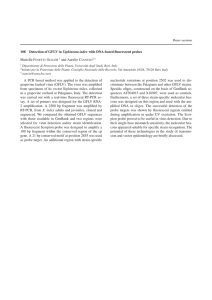
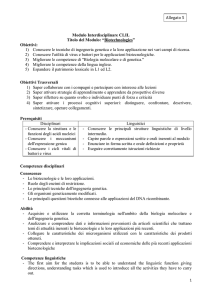
![Yellow-Fever_SA_2012-Ox_CNV [Converted]](http://s1.studylibit.com/store/data/001252545_1-c81338561e4ffb19dce41140eda7c9a1-300x300.png)
